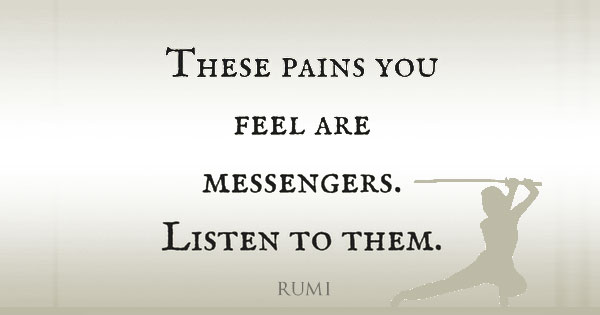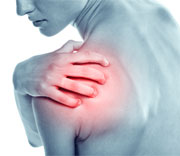There are two classifications of pain: acute and chronic.
Acute pain usually results from disease, inflammation, or injury to tissues from trauma and surgery. This type of pain generally comes on suddenly, and may be accompanied by anxiety or emotional distress. The cause of acute pain can usually be diagnosed and treated, and the pain is self-limiting, confined to a given period of time and severity.
Your typical acute injury is something like a sprained ankle or a bang on the head. Many patients wait and hope that the injury will go away. It is much better to come in right away and have the injury treated so that it won’t be a chronic condition in the future.
From injuries, or normal wear and tear, connective tissues are damaged, resulting in altered structure and function. Pain often is the result, and efforts to compensate for the pain leads to further injury and impairment. Unaddressed injuries to ligaments and tendons can lead to arthritis and chronic irreversible problems.
COME IN RIGHT AWAY WHEN YOU INJURE YOURSELF. IT WILL REDUCE HEALING TIME AND PREVENT THE INJURY FROM BECOMING CHRONIC.
“Chronic pain can be described as ongoing or recurrent pain, lasting beyond the usual course of acute illness or injury or more than 3 to 6 months, and which adversely affects the individual’s well being. A simpler definition for chronic or persistent pain is pain that continues when it should not.” (IASP 2004). Definition from the American Chronic Pain Association
Patients who have any of the following symptoms are most likely to have a chronic pain pattern:
The diagnosis that brings a patient in for chronic pain management varies, but some of the most common are:
 Back pain
Back pain- Neck pain
- Rib Pain and Intercostal Neuralgia
- Adhesive capsulitis
- Patellar tendonitis
- Sacral Plexus Injury
- Biomechanical spine pain
- Myofascial pain
- Fibromyalgia
- Osteoarthritis
- Chronic headaches and Migraines
Pain management at Integrative Japanese Acupuncture and Wellness Center is a combination acupuncture, protocols and techniques taken from a variety of the healing arts to create a integrative program for the reduction of pain and suffering.
INTEGRATIVE JAPANESE ACUPUNCTURE
Acupuncture needle brings Qi by vibrating the acupuncture point where yin and yang constantly exchange with each other; with the increase of Qi comes an increase in blood circulation.
Research has found that acupuncture improves circulation to specific areas of the body that have been injured and are targeted for treatment; promotes the healing and repair of damaged tissue by releasing polypeptides in the area of injury; increases the release of endorphins and endogenous opiates; supports the body’s own natural pain relievers and anti–inflammatory chemicals; affects transmission of nerve impulses and blocks pain impulses from reaching the brain. Acupuncture also lowers the need for conventional pain-killing drugs, reducing the risk of side effects for patients who have to take pain medication.
MANUAL MEDICINE
At the Integrative Japanese Acupuncture and Wellness Center we use a variety of manual medicine techniques to relieve pain and inflammation:
Please visit the Other Services tab for more Information about these techniques.
Dr. Duckworth is a member of the American Academy of Pain Management
American Academy of Pain Management
Visual Illustrations and Information on Anti-inflammatory Diets


